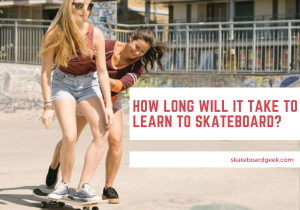
Well, no one ever learned everything about skateboarding. It’s a never-ending process to get better at controlling the board. However, Depending on your age, athletic abilities, physical fitness, discipline and commitment, you can expect to spend anywhere from a few days to weeks learning the basics of skating.
If you have never been on a board before, read if longboarding is easier than skateboarding before stepping into the world of boarding.
Contents
How Long Does It Take to Learn to Skateboard?
Learning to skateboard depends on how much time and effort you put into learning, as well as your natural ability. However, with consistent practice, most people can become proficient skateboarders in a few months.
So don’t be discouraged if it takes a little longer than you expected – just keep practicing and you’ll get there!
Assuming that you are dedicated and will be practicing 4 to 6 hours a day, here is a skateboarding progress timeline about how long it might take you to learn to skateboard:
(We have seen new skaters progressing in this time period.)
A day – 3 weeks: You should focus on learning to push a skateboard, learn to balance and get comfortable on a moving board.
1 – 2 months: Once you learn to stabilize your body on a moving board, it’s time to practice turning, carving and stopping on a skateboard.
3 – 5 months: Now that you have learned to control a moving board, start riding up and down on the obstacles in skate parks and practice basic tricks like kickturn, drop-in, tic-tac, manual and ollies.
6 – 8 months: By now, you’ll feel confident on a skateboard, try practicing and performing some advanced tricks like kickflips and varials, grinding, shuv-it and fakies.
9 – 12 months: You should be comfortable playing basics and some advanced tricks, it’s time to skate on stairs, rails and ledges. Perform ollies on stairs and also practice heelflips and 360s.
1 Year+: You’ll be able to perform tricks like kickflip, ollies, drop-in, grinding, etc. and, your pop should have been improved. Keep practicing to get better and learn new ways to play with the board – there’s no limit to skateboarding!
Of course, this is just a general guideline – everyone learns at a different pace. So if you don’t think you’ll be able to devote 4 to 6 hours a day to practice, it might take you a little longer to reach the same level. Stay consistent and focused – you’ll get there eventually!
We recommend stepping onto an electric skateboard only when you can comfortably ride a normal skateboard or longboard at a fast speed.
What Do You Need to Learn to Skateboard?
In order to learn to skateboard, you will need a few things:
1. A sturdy skateboard – the deck should be made of seven-ply maple wood and have medium-sized wheels (around 54mm). Avoid boards with plastic wheels, as they are less durable and won’t roll as well.
2. A helmet – this is very important, as skating can be dangerous. Make sure the helmet fits snugly and isn’t too loose.
3. Knee and elbow pads – again, safety is the key when skateboarding. Wearing knee and elbow pads will help protect you from falls and scrapes.
4. A good pair of shoes – you’ll need a pair of skate shoes that are comfortable and have a good grip. Avoid wearing flip-flops or sandals, as they can get caught on the board and cause you to fall.
Learn the Basics of Skateboarding in a Day
It may take some time to master skateboarding skills, however, the basics can be learned in a day. Below is the timeline that we recorded by monitoring most beginners in our Skateboard Geek Academy. It may differ in your case, but stay committed and persistent.
1. Learn to Balance on the Board: (10 Minutes)
Remember, it’s all about balancing and stabilizing your body on a skateboard. You can learn to
Balance your weight on a board in a few minutes.
Place the skateboard on a mat or grass where it does not move as freely as on concrete. Put your front foot on the front bolts and slowly lift the back foot and place it on the tail side bolts. Now, shift weight on the toes then on the heels to observe how the board will react.
After that, place the board on flat concrete, street or parking lot, and repeat the process. Since the wheels are on solid ground, they’ll move slightly when you shift the weight – do not lose control and move naturally.
2. Push on a Skateboard: (30 Minutes)
Here comes the hard part, pushing on a skateboard requires focus and a little time. Place your front foot on the front bolts, shift your weight on the front foot and slowly push the board with your back foot. Keep your back straight and knees bent.
Remember to push slowly and keep your back foot close to the ground. Once you find it comfortable, try putting both feet on the moving board. Do not rush, take it slow – perhaps you’ll step down a few times but do not give up.
Read why skateboarding is so hard to learn.
3. Learn to Carve: (15 Minutes)
Turning a skateboard when moving is known as “carving”. It may sound a bit technical but it’s actually not! All it requires is balancing your body and shifting your weight (what we learned in the first step). Simply shift your weight either on the toes or the heels and try turning the direction of the nose towards the side you want to turn and shift weight to that side.
To turn left, transfer your weight to your left foot; the same way – to turn right, shift your weight to your right foot. This is how you drive a board in the desired direction.
Video Guide on Turning a Skateboard
4. Learn to Stop: (10 Minutes)
Learning to stop on a skateboard is the most crucial part. It is not recommended to jump off the board while it is moving, you can fall and get injured. That is where the stopping technique comes in handy.
The easiest way to stop on a skateboard is by keeping your weight centered on the front foot, keep knees bent and dragging your back foot on the ground to create friction and reduce the speed.
How Long Does It Take to Learn Skateboarding Tricks?
Skateboarding tricks are challenging and it takes time to confidently perform them. For those with zero to little skateboarding experience, it can take anywhere from a few weeks to a couple of months to learn the basic tricks.
And, for those who are already familiar with skating or other board sports, the learning process may be shortened significantly.
The key to learning skateboarding tricks is to practice regularly, observe and learn from mistakes. With enough time and effort, even the most complex tricks can be mastered.
- Basic tricks: You can learn and master the basic skateboarding tricks such as ollies, tic-tac, drop-in, and manual in 2 to 5 months depending on the time you practice them every day.
- Advanced tricks: Advanced skateboarding tricks like the kickflip, grinding, heel flip and fakies, etc. can be learned after you’ll be able to perform basics confidently – time can be between 6 to 12 months.
- Most advanced tricks: Tricks like 360s, laser flip, heelflip, backside tail slide and triple ollies can take 2 years+ to master them.
Useful Tips on Learning to Skateboard
If you are new to skateboarding, here are some tips to help you learn how to skateboard;
1. Start by watching tutorials and learning the basic techniques. Skateboarding is all about balance, so it’s important to get a feel for how to stay on your board before you start trying tricks.
2. Practice in an open area away from traffic and obstacles. Once you have the basics down, it’s time to start practicing. Look for a wide-open space where you can skate without having to worry about traffic or obstacles.
3. Get comfortable with your board. Before you start skating, take some time to get familiar with your board. Practice moving around on it and getting a feel for how it responds to your movements.
4. Skateboarding is all about progressing at your own pace. Start with small tricks and gradually work your way up to more difficult ones.
5. Be patient and keep practicing. Learning to skateboard takes time and practice. Don’t get discouraged if you don’t get it right away. Just keep training and you’ll eventually be able to ride like a pro skateboarder.
Conclusion
Now you know how long it takes to ride and perform tricks on a skateboard. Learning to skateboard is a process that takes time and effort. It can take years to master, however, with consistent practice, most people can become proficient skateboarders in a few months.
Learning the basics of skateboarding does not take too much time. In fact, it is possible to learn the basics in a day or two if you are determined and have the right guidance. It takes practice and patience to master the skills.
So don’t be discouraged if it takes a little longer than you expected – just keep practicing!
Frequently Asked Questions
Is skateboarding hard to learn?
Skateboarding can be hard to learn depending on your age, flexibility, athletism and determination. Like any other skill, it requires practice and patience to master the techniques. For some people, it takes months to years to properly ride a board and perform tricks. However, the basics can be learned in a day.
Can you learn to skateboard in one day?
You can learn to balance on a skateboard in a day but it takes weeks to comfortably ride a skateboard. You need to build a strong connection between your mind and muscles to stabilize your body on a moving board – it takes more than a day!
How long does it take to learn how do you move on a skateboard?
Generally, it takes between a day to a week to learn to move on a skateboard. However, the time it takes to learn how to move on a skateboard really depends on the person. Some people can get the hang of it within minutes while others may take days or weeks. It is important to be patient and keep practicing until you feel comfortable with the movement.
How many hours a day should I practice skateboarding?
You should practice skateboarding for at least 3 hours a day. If you want to improve your skills faster, you can practice for longer. However, if you are just starting out, it is important to take things slow and not overdo it. As you get more comfortable with skateboarding, you can increase the amount of time you practice.
The more you practice, the better you will become at skateboarding. However, make sure to take breaks in between to avoid getting too tired. Skateboarding should be fun, so don’t forget to enjoy the ride!
- Best Electric Skateboard for Big Guys (Heavy Duty E-Boards) - June 3, 2023
- Skateboard Clothing Brands to Make You Stand Out In 2026 - May 31, 2023
- 90s Skateboarding Brands: The Rise and Fall of the Legends - May 28, 2023
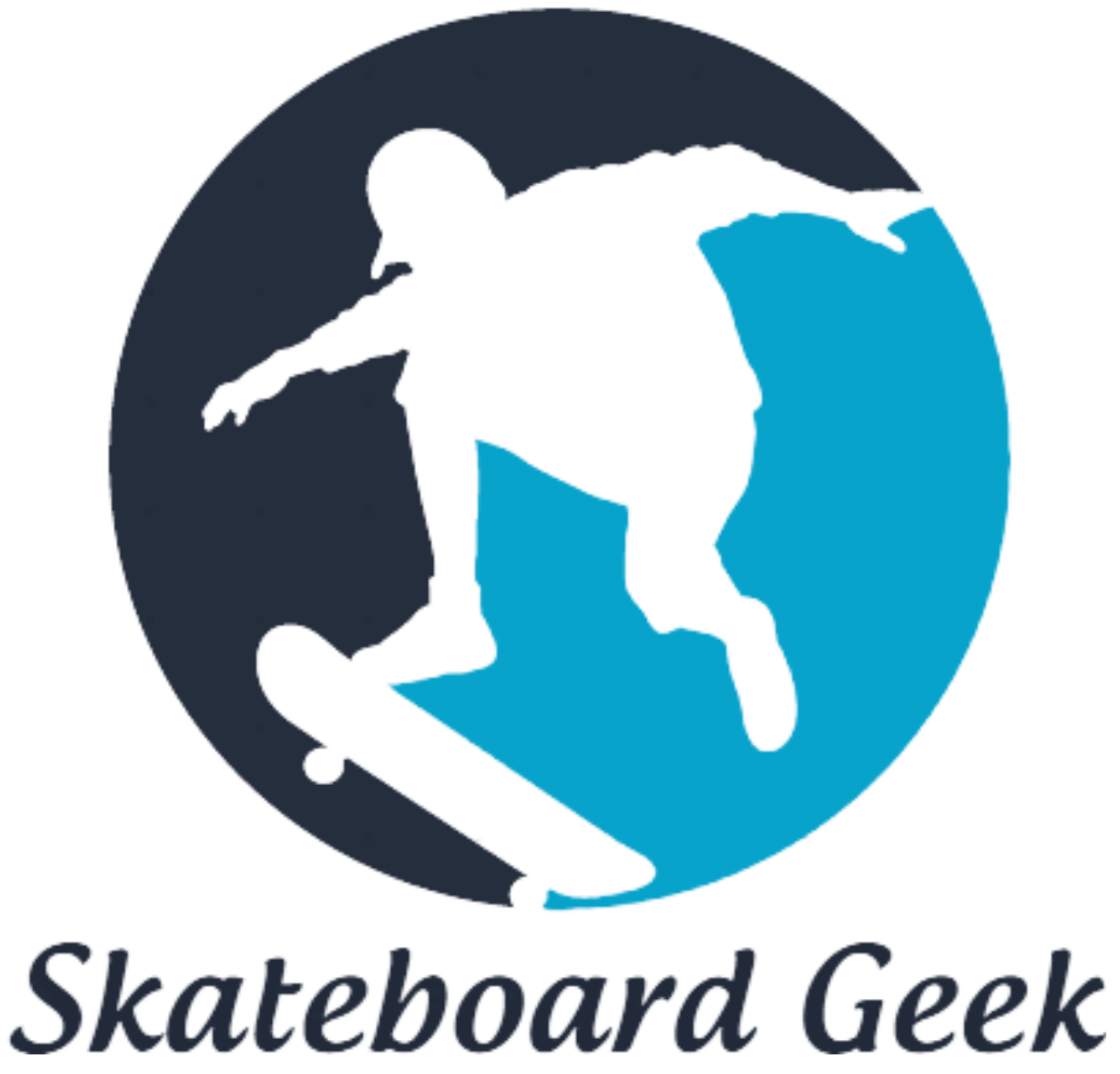
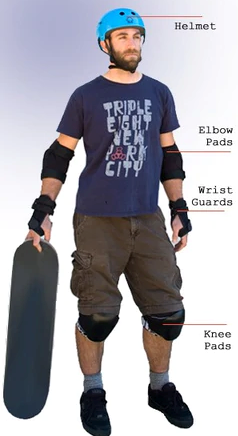
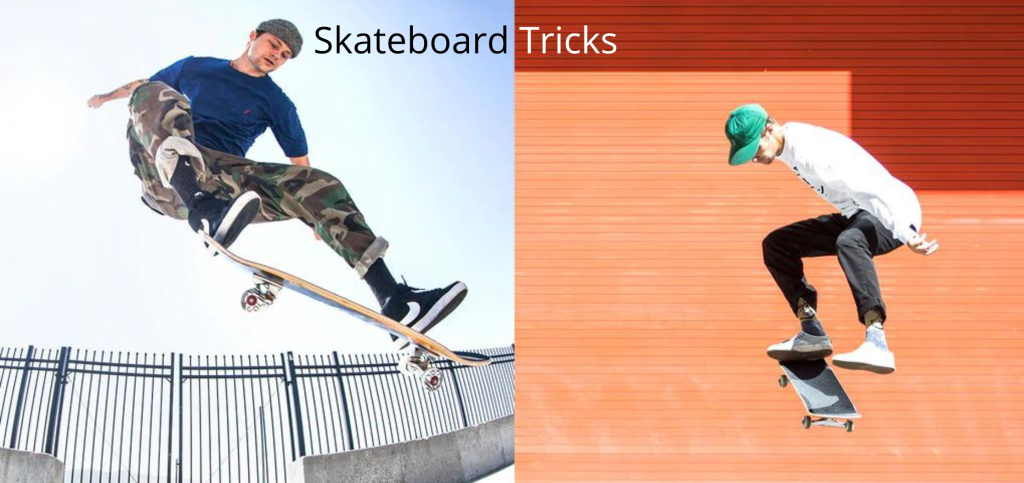
![How to Take Trucks off a Skateboard Like a Pro? [The Right Way] how to take trucks off a skateboard without a skate tool](https://skateboardgeek.com/wp-content/uploads/2023/05/how-to-take-trucks-off-a-skateboard-without-a-skate-tool-150x150.jpg)
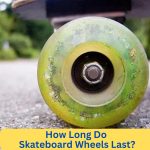
![How Long Do Skateboard Trucks Last: [When to Replace Them?] How Long Do Skateboard Trucks Last](https://skateboardgeek.com/wp-content/uploads/2023/04/How-Long-Skateboard-Trucks-Last-150x150.jpg)
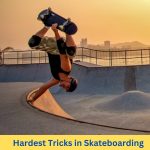
![How Much Does A Skateboard Cost? [+Hidden Prices] 2026 How Much Does A Skateboard Cost](https://skateboardgeek.com/wp-content/uploads/2023/02/How-Much-Does-Skateboard-Cost-150x150.jpg)

![How Many Calories Does Skateboarding Burn? [Answered] does skateboarding burn more calories than walking](https://skateboardgeek.com/wp-content/uploads/2023/04/does-skateboarding-burn-more-calories-than-walking-150x150.jpg)
